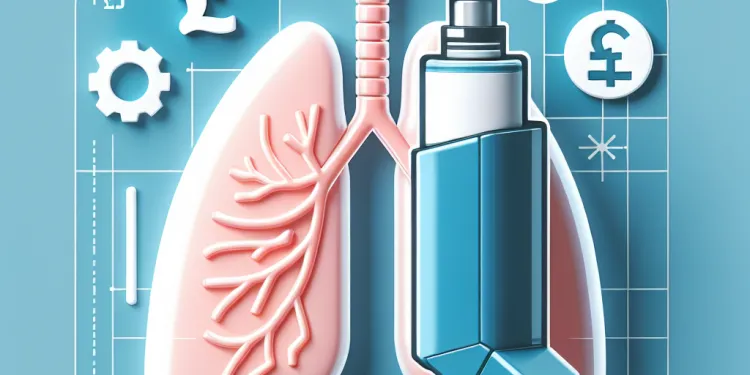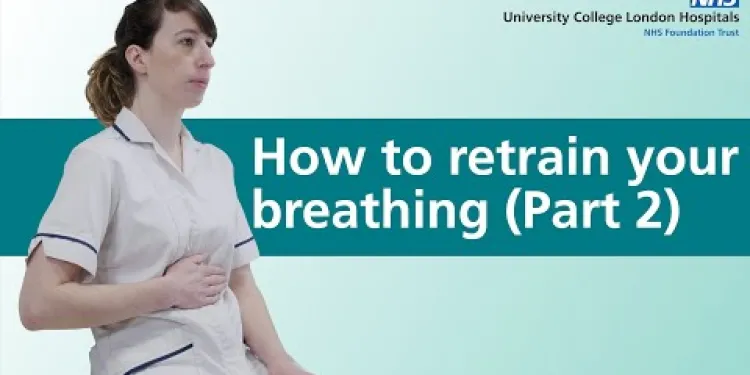
Find Help
More Items From Ergsy search
-

How is asthma diagnosed?
Relevance: 100%
-

Is asthma a serious condition?
Relevance: 85%
-

What is Asthma?
Relevance: 83%
-

Can children outgrow asthma?
Relevance: 83%
-

An Asthma Explainer with Dr Katherine Hickman
Relevance: 83%
-

Can exercise trigger asthma symptoms?
Relevance: 82%
-

What are the common symptoms of asthma?
Relevance: 80%
-

What causes asthma?
Relevance: 79%
-

Are there different types of asthma?
Relevance: 79%
-

Can asthma be cured?
Relevance: 79%
-

Can asthma be fatal?
Relevance: 79%
-

How is asthma treated?
Relevance: 79%
-

Is asthma more common in certain age groups?
Relevance: 77%
-

How often should someone with asthma see a doctor?
Relevance: 76%
-

What is an asthma action plan?
Relevance: 76%
-

Can diet affect asthma?
Relevance: 75%
-

What triggers asthma attacks?
Relevance: 75%
-

Are inhalers the only treatment for asthma?
Relevance: 75%
-

Can stress cause asthma symptoms?
Relevance: 72%
-

Is there a link between hay fever and asthma?
Relevance: 72%
-

How can asthma attacks be prevented?
Relevance: 72%
-

How does air pollution affect asthma?
Relevance: 70%
-

Can dust mites cause asthma and eczema?
Relevance: 65%
-

Rise in Childhood Asthma Linked to Air Pollution in Urban Areas
Relevance: 64%
-

UK Study Links Poor Air Quality to Increased Asthma Cases in Urban Areas
Relevance: 61%
-

Prostate cancer diagnosis and tests
Relevance: 59%
-

How to retrain your breathing | Part 2 | Asthma, long covid or breathlessness
Relevance: 59%
-

BSL - Diagnosis of panic disorder
Relevance: 58%
-

Head and Neck Cancer Diagnosis
Relevance: 58%
-

Attention deficit hyperactivity disorder (ADHD) - Diagnosis
Relevance: 53%
-

BSL - Diagnosis of obsessive compulsive disorder (OCD)
Relevance: 52%
-

What is the life expectancy after a motor neurone disease diagnosis?
Relevance: 47%
-

Understanding and Managing Respiratory Illnesses in Families
Relevance: 34%
-

How can eczema be diagnosed?
Relevance: 29%
-
Should individuals with certain medical conditions avoid aspirin?
Relevance: 27%
-

Can hay fever symptoms mimic other conditions?
Relevance: 24%
-

Experts Warn of Rising Hay Fever Cases as Pollen Counts Surge
Relevance: 24%
-

How is autism diagnosed?
Relevance: 22%
-

How is shingles diagnosed?
Relevance: 22%
-

Had a cough for three weeks or more? It could be a warning sign | NHS
Relevance: 22%
Introduction to Asthma Diagnosis
Asthma is a common respiratory condition that affects the airways, causing them to become inflamed and narrow, leading to symptoms such as wheezing, coughing, shortness of breath, and chest tightness. Accurate diagnosis of asthma is crucial for effective management and treatment. In the UK, diagnosis typically involves a combination of medical history analysis, physical examination, and various tests to assess lung function.
Medical History and Symptom Assessment
Diagnosing asthma begins with a thorough medical history and assessment of symptoms. A healthcare professional will inquire about the frequency and severity of breathing difficulties, any known triggers, and the patient's family history of asthma or related allergic conditions. Understanding the pattern of symptoms—such as whether they worsen at night or during exercise—can provide valuable insights when considering a diagnosis of asthma.
Physical Examination
A physical examination is conducted to check for signs that may suggest asthma or other respiratory conditions. This includes listening to the patient's breathing using a stethoscope to detect wheezing sounds, which are common in asthma sufferers. The examination may also involve checking the nose and throat for signs of allergies or other related conditions.
Lung Function Tests
To diagnose asthma, objective measures of lung function are often required. One commonly used test in the UK is spirometry. During this test, the patient blows into a device called a spirometer, which measures the volume of air exhaled and the speed at which it is exhaled. Spirometry can help assess how well the lungs are working and identify any obstructions in the airways. In some cases, this test may be repeated after the patient has inhaled a bronchodilator, which helps to open the airways, to see if there is an improvement in lung function indicative of asthma.
Additional Tests
If the diagnosis remains uncertain after spirometry, additional tests may be conducted. A peak flow test can monitor how well air is flowing out of the lungs and can be useful in tracking asthma symptoms over time. Fractional exhaled nitric oxide (FeNO) testing measures the level of nitric oxide in the breath, which can indicate airway inflammation. Bronchoprovocation tests, which involve inhaling a substance that causes airway narrowing in sensitive individuals, may also be used to confirm the diagnosis.
Conclusion
Accurately diagnosing asthma involves a combination of medical history, physical examination, and various lung function tests. In the UK, these methods help ensure that individuals receive appropriate management and treatment for their condition. It is critical for anyone experiencing symptoms suggestive of asthma to seek medical advice from a healthcare professional to undergo proper evaluation and diagnosis.
Introduction to Asthma Diagnosis
Asthma is a lung problem that makes it hard to breathe. It happens when the airways get swollen and tight. This can make you wheeze, cough, feel short of breath, or have a tight chest. It's important to know if someone has asthma, so they can get the right help. In the UK, doctors look at your health history, do an exam, and use tests to see how your lungs work.
Medical History and Symptom Assessment
The first step to finding out if someone has asthma is to ask about their health and symptoms. The doctor will ask how often you have trouble breathing, what makes it worse, and if anyone else in your family has asthma. They want to know if your symptoms get worse at night or when you run around. This helps in figuring out if you have asthma.
Physical Examination
The doctor will also do a physical exam. They will listen to your breathing with a stethoscope to check for wheezing sounds, which are common if you have asthma. They might also look at your nose and throat to see if you have allergies.
Lung Function Tests
To be sure about asthma, doctors use tests to check how your lungs work. In the UK, one common test is called spirometry. You blow into a machine called a spirometer to see how much air you can blow out and how fast. This helps to see if your airways are blocked. Sometimes, the test is done after you take medicine to open your airways. If this medicine makes your breathing better, it may mean you have asthma.
Additional Tests
If the doctor is still unsure, more tests can help. A peak flow test checks how well you can blow out air and can show changes in your asthma over time. Another test, called FeNO, measures a gas in your breath that shows if your airways are swollen. There are also tests where you breathe in something that might make your airways tight. This helps to find out if you have asthma.
Conclusion
Finding out if you have asthma means looking at your health history, doing a physical check, and testing your lungs. In the UK, these steps help make sure you get the right treatment. If you think you have asthma, it is very important to talk to a doctor. They can check if you have asthma and give you the help you need.
Frequently Asked Questions
What is asthma?
Asthma is a chronic lung condition that causes difficulty in breathing due to inflammation and narrowing of the airways.
How is asthma typically diagnosed?
Asthma is diagnosed through a combination of medical history, physical examination, and lung function tests.
What medical history information is relevant for diagnosing asthma?
Doctors look for a history of breathing problems, allergies, or a family history of asthma, alongside triggers and symptoms.
What physical examinations are involved in diagnosing asthma?
A doctor will listen to breathing sounds and check for signs of wheezing, coughing, or respiratory infections.
What are lung function tests?
Lung function tests measure how much air you can inhale and exhale and how quickly you can expel air from your lungs.
What is spirometry?
Spirometry is a common lung function test that measures the amount and speed of air you can exhale after taking a deep breath.
How does a peak flow meter help in diagnosing asthma?
A peak flow meter measures how well your lungs are functioning by assessing the maximum speed of exhalation. It helps in monitoring asthma.
What is a bronchoprovocation test?
A bronchoprovocation test evaluates how your airways respond to various stimuli, which can help confirm an asthma diagnosis.
Is allergy testing part of asthma diagnosis?
Yes, allergy tests can identify if allergies are triggers for asthma symptoms, aiding in diagnosis and management.
Can imaging tests like X-rays diagnose asthma?
X-rays cannot diagnose asthma but can help rule out other conditions like infections that may cause similar symptoms.
Why is it important to correctly diagnose asthma?
Accurate diagnosis ensures proper management and treatment, helping prevent asthma attacks and improve quality of life.
Can children be tested for asthma?
Yes, children can be tested using similar methods, although diagnosis in young children may rely more on clinical judgment due to difficulty performing lung function tests.
How is asthma distinguished from other respiratory conditions?
Asthma is distinguished by reversible airflow obstruction and responsiveness to bronchodilators, which is different from other chronic conditions like COPD.
What role does a methacholine challenge test play in diagnosing asthma?
The methacholine challenge test assesses airway hyperresponsiveness which is a characteristic of asthma.
Can asthma be diagnosed with just a blood test?
No, asthma cannot be diagnosed with a blood test alone, although blood tests can help in identifying allergies or rule out other conditions.
What is FeNO testing in asthma diagnosis?
FeNO testing measures fractional exhaled nitric oxide levels, which are elevated in asthma due to airway inflammation.
Can asthma symptoms vary making diagnosis challenging?
Yes, asthma symptoms can vary in frequency and severity, complicating diagnosis; hence a comprehensive evaluation is essential.
Does family history contribute to asthma diagnosis?
A family history of asthma or allergies can increase the likelihood of asthma, and doctors consider this while diagnosing.
Is it possible to have asthma without wheezing?
Yes, some people may have asthma with symptoms like coughing or chest tightness without wheezing.
How often should asthma diagnosis be reevaluated?
Asthma diagnosis should be reevaluated periodically, especially if symptoms or responses to treatment change.
What is asthma?
Asthma is when it is hard to breathe. Your chest might feel tight. You might cough or hear a wheezing sound when you breathe.
If you have asthma, you might need to use a special spray called an inhaler. This helps you breathe better.
To help understand asthma, you can use pictures and videos. A grown-up can also read with you and explain it.
Asthma is a lung problem that makes it hard to breathe. This happens because the airways get swollen and tight.
How do doctors find out if you have asthma?
Doctors find out if you have asthma by doing three things: talking about your health, checking your body, and testing how well you can breathe.
What important health information helps find out if you have asthma?
Doctors check if someone has had trouble breathing before. They also look for allergies or if other family members have asthma. They ask about things that make the person feel bad and what happens to them.
How do doctors check if someone has asthma?
A doctor will listen to how you breathe. They will check if you are wheezing, coughing, or have a lung infection.
What are lung function tests?
Lung function tests check how well your lungs are working. They help doctors see if your lungs are healthy.
These tests are easy to do and do not hurt. You might blow into a tube or take a deep breath.
Doctors use these tests to find out if there is a problem with your breathing.
Having trouble reading? Try asking someone to read with you. You can also use an app that reads text out loud.
Lung function tests check how well your lungs work. They see how much air you can breathe in and out, and how fast you can blow the air out.
What is spirometry?
Spirometry is a test for your lungs. It checks how well they work. You blow air into a tube. The test measures how much air you can blow out and how fast.
Doctors use this test to see if your lungs are healthy. It helps find problems like asthma.
To make it easier, you can:
- Ask someone to explain the test to you.
- Watch videos about the test.
- Practice deep breathing to get ready.
Spirometry is a test to check how well your lungs work. It looks at how much air you can breathe out and how quickly you can do it after breathing in deeply.
How can a peak flow meter help find out if you have asthma?
A peak flow meter is a tool that checks how well your lungs work. It shows how fast you can blow air out. This helps doctors watch over asthma.
What is a bronchoprovocation test?
A bronchoprovocation test helps doctors check how well your lungs work.
Doctors see how your lungs react to certain triggers. Triggers can be things like dust or cold air.
If you have trouble breathing, this test might help show why.
Use tools like pictures or videos to understand better.
Ask a doctor or nurse if you have questions.
A bronchoprovocation test checks how your lungs react to different things. This helps doctors see if you have asthma.
Do you need an allergy test to find out if you have asthma?
If doctors think you might have asthma, they sometimes test for allergies too.
Testing for allergies can help doctors learn more about what might be making your asthma worse.
Remember, ask a grown-up or a doctor if you have questions.
You can use pictures or videos to help understand more about asthma and allergies.
Yes, allergy tests can help find out if allergies cause asthma problems. This helps doctors know what is wrong and how to help you feel better.
Can doctors use pictures, like X-rays, to find out if you have asthma?
Doctors sometimes use pictures, like X-rays, to see inside the body. But these pictures usually cannot tell if someone has asthma. Asthma is about how you breathe, not about seeing inside the body.
To find out if you have asthma, doctors may ask you to do breathing tests or listen to your breathing with a stethoscope.
If you find reading hard, you can ask someone to help you. You can also try using apps that read text out loud to you.
X-rays can't tell if someone has asthma, but they can help find out if another sickness, like an infection, is causing the same problems.
Why is it important to know if someone has asthma?
It is important to know if a person has asthma because:
- Doctors can give the right medicine.
- People can feel better and breathe easier.
- It helps people avoid things that make asthma worse, like smoke or pets.
To help understand asthma better, you can:
- Talk to a doctor or nurse.
- Watch videos about asthma.
- Use picture books to learn about asthma.
Knowing exactly what's wrong helps doctors take care of you the right way. This stops asthma attacks and makes life better.
Can kids get tested for asthma?
Yes, doctors can test kids for asthma.
Here is how:
- Doctors may ask questions about how the child is feeling.
- They may listen to the child's breathing.
- Doctors might use a special tool to check how well the child can breathe.
If you think a child might have asthma, it's good to visit a doctor.
Some helpful tools:
- Diagrams showing how lungs work.
- Breathing exercises to help understand asthma.
Yes, kids can be tested in similar ways. But it's harder to do lung tests with young kids. So, doctors use their own judgment a lot when figuring out what's wrong.
How can you tell if someone has asthma and not something else?
It can be hard to know if someone has asthma or a different breathing problem. Here are some ways to know:
- Asthma Symptoms: People with asthma often cough, wheeze (a whistling sound when breathing), feel tightness in the chest, or have trouble breathing.
- Triggers: Things like dust, pollen, exercise, or cold air can make asthma worse.
- Tests: Doctors can do tests to check how well the lungs work and see if it's asthma.
If you're not sure or need help, a doctor can help figure it out. Tools like picture charts or videos can also explain asthma easily.
Asthma is a lung problem. It makes it hard to breathe. But medicine can help open the airways. This is different from another lung problem called COPD.
How does a methacholine challenge test help find out if someone has asthma?
The methacholine challenge test checks if your airways are too sensitive, which can be a sign of asthma.
Can a doctor find out if you have asthma with only a blood test?
No, you cannot find out if someone has asthma just from a blood test. But blood tests can help find out if someone has allergies or make sure it is not something else.
What is FeNO testing for asthma?
FeNO testing helps doctors find out if you have asthma. Asthma is a breathing problem.
During the test, you breathe out into a machine. The machine checks your breath for a gas called nitric oxide. This gas can show if your airways are swollen.
Swollen airways are a sign of asthma. The test helps doctors decide the best way to help you.
If you find it hard to understand this, you can ask someone to explain it to you or use pictures to help make it clearer.
FeNO tests check how much nitric oxide is in the breath. This number is higher when someone has asthma because their airways are swollen.
Do asthma signs change, making it hard to find out if someone has it?
Yes, asthma signs can come and go. They can be mild or strong. This makes it hard to know if someone has asthma. That is why doctors need to check carefully.
Can you get asthma from your family?
Some people get asthma because it runs in their family. This means if a parent or brother or sister has asthma, you might get it too. It's like how brown eyes or curly hair can run in the family.
If you think asthma runs in your family, a doctor can help. They can tell you more about asthma and what to do.
It's good to talk to your family about this. They can share their stories and help.
You can also draw pictures or use colored pencils to learn and share your feelings about asthma.
If your family has asthma or allergies, you might have a bigger chance of getting asthma too. Doctors think about this when they check if someone has asthma.
Can you have asthma without wheezing?
Yes, you can have asthma and not wheeze. Wheezing is a whistling sound when you breathe. Sometimes, people with asthma do not make this sound. They might cough a lot, feel tight in their chest, or find it hard to breathe.
If you think you have asthma, it is good to talk to a doctor. They can help you understand what is going on.
Here are some things that can help:
- Keep a diary of your breathing and symptoms.
- Use an inhaler if the doctor says to.
- Stay away from smoke and other things that make breathing hard.
Yes, some people with asthma might cough or feel their chest is tight, but they might not wheeze.
How often should you check your asthma diagnosis?
If you have asthma, it's important to check if your diagnosis is still right.
Doctors say it's good to check your asthma every year.
Visiting your doctor helps make sure you have the right treatment.
Use tools like a calendar to remember your check-ups.
If you feel worse, tell your doctor sooner.
Doctors need to check if you really have asthma from time to time. This is important if you feel different or if your medicine stops working well.
Useful Links
- Ergsy carfully checks the information in the videos we provide here.
- Videos shown by Youtube after a video has completed, have NOT been reviewed by ERGSY.
- To view, click the arrow in centre of video.
- Most of the videos you find here will have subtitles and/or closed captions available.
- You may need to turn these on, and choose your preferred language.
- Go to the video you'd like to watch.
- If closed captions (CC) are available, settings will be visible on the bottom right of the video player.
- To turn on Captions, click settings .
- To turn off Captions, click settings again.
More Items From Ergsy search
-

How is asthma diagnosed?
Relevance: 100%
-

Is asthma a serious condition?
Relevance: 85%
-

What is Asthma?
Relevance: 83%
-

Can children outgrow asthma?
Relevance: 83%
-

An Asthma Explainer with Dr Katherine Hickman
Relevance: 83%
-

Can exercise trigger asthma symptoms?
Relevance: 82%
-

What are the common symptoms of asthma?
Relevance: 80%
-

What causes asthma?
Relevance: 79%
-

Are there different types of asthma?
Relevance: 79%
-

Can asthma be cured?
Relevance: 79%
-

Can asthma be fatal?
Relevance: 79%
-

How is asthma treated?
Relevance: 79%
-

Is asthma more common in certain age groups?
Relevance: 77%
-

How often should someone with asthma see a doctor?
Relevance: 76%
-

What is an asthma action plan?
Relevance: 76%
-

Can diet affect asthma?
Relevance: 75%
-

What triggers asthma attacks?
Relevance: 75%
-

Are inhalers the only treatment for asthma?
Relevance: 75%
-

Can stress cause asthma symptoms?
Relevance: 72%
-

Is there a link between hay fever and asthma?
Relevance: 72%
-

How can asthma attacks be prevented?
Relevance: 72%
-

How does air pollution affect asthma?
Relevance: 70%
-

Can dust mites cause asthma and eczema?
Relevance: 65%
-

Rise in Childhood Asthma Linked to Air Pollution in Urban Areas
Relevance: 64%
-

UK Study Links Poor Air Quality to Increased Asthma Cases in Urban Areas
Relevance: 61%
-

Prostate cancer diagnosis and tests
Relevance: 59%
-

How to retrain your breathing | Part 2 | Asthma, long covid or breathlessness
Relevance: 59%
-

BSL - Diagnosis of panic disorder
Relevance: 58%
-

Head and Neck Cancer Diagnosis
Relevance: 58%
-

Attention deficit hyperactivity disorder (ADHD) - Diagnosis
Relevance: 53%
-

BSL - Diagnosis of obsessive compulsive disorder (OCD)
Relevance: 52%
-

What is the life expectancy after a motor neurone disease diagnosis?
Relevance: 47%
-

Understanding and Managing Respiratory Illnesses in Families
Relevance: 34%
-

How can eczema be diagnosed?
Relevance: 29%
-
Should individuals with certain medical conditions avoid aspirin?
Relevance: 27%
-

Can hay fever symptoms mimic other conditions?
Relevance: 24%
-

Experts Warn of Rising Hay Fever Cases as Pollen Counts Surge
Relevance: 24%
-

How is autism diagnosed?
Relevance: 22%
-

How is shingles diagnosed?
Relevance: 22%
-

Had a cough for three weeks or more? It could be a warning sign | NHS
Relevance: 22%


